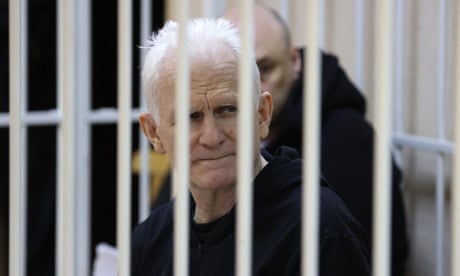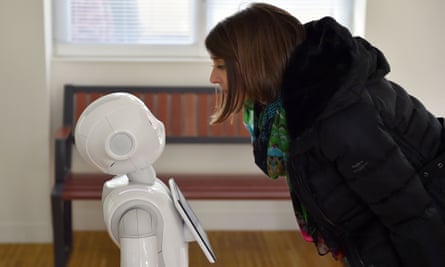Indian rice tycoon Karan Chanana, who gave the Conservatives more than £220,000, is under scrutiny by India’s finance ministry
A leading Tory donor who has given more than £220,000 to the party is being investigated over allegations of fraud and money laundering.
Karan Chanana, head of the global rice brand Amira, is being investigated in India over claims that tens of millions of pounds of bank loans were unlawfully diverted into shell entities. Chanana has not responded to the claims.
The allegations come as the UK government faces mounting pressure to tighten up rules on foreign donations and improve diligence checks. The Conservatives face calls this weekend to freeze the money donated by Chanana, pending an inquiry.
The enforcement directorate in India, which is part of the country’s finance ministry, said it conducted search operations on 2 May at 21 locations in India connected to Chanana, the Indian company Amira Pure Foods and other parties.
Nearly £100,000 in Indian currency was seized in the searches, which were conducted under India’s Prevention of Money Laundering Act, said the directorate. No charges have been filed to date.
In a statement, the enforcement directorate said: “Investigations revealed that the accused entities in connivance with each other as well as other related/unrelated entities have illegally diverted loan funds sanctioned by the consortium of banks by way of transferring loan funds into the accounts of various shell entities under the guise of genuine business transactions.
“It was also known that Karan A Chanana had donated to a political party of [the] United Kingdom since 2019 … while the accused entity had itself defaulted on repayment loans.”
Chanana, 50, has been credited with transforming a family business into a global conglomerate.
His company Amira Nature Foods was listed on the New York stock exchange in October 2012, specialising in Indian basmati rice grown in the foothills of the Himalayas.
Chanana, its chairman and chief executive, operated the business from its headquarters in the 35-storey Gold Tower in Dubai, while its official company registration was in the British Virgin Islands.
Its subsidiaries included Amira Pure Foods in India, now under investigation, and Amira G Foods in the UK, according to corporate filings.
Amira G Foods, controlled by Chanana, donated £222,104 to the Conservative party between September 2019 and December 2021.The latest accounts for the UK company show net liabilities of £5.96m, with its parent company in the British Virgin Islands providing financial support.
Amira Nature Foods was delisted from the New York stock exchange in August 2020 after it missed deadlines for filing financial information.
A consortium of banks, headed by India’s Canara Bank, filed an information report with India’s Central Bureau of Investigation in November 2020 alleging bank fraud.
It accused New Delhi-based Amira Pure Foods, Chanana and his fellow directors of “wrongfully and dishonestly” transferring loans into “paper companies” between 2009 and 2018, causing wrongful bank losses of more than £116m. Amira Pure Foods in India is now under liquidation.
The enforcement directorate said it initiated its investigation based on the information report filed by the banks. It says further inquiries are continuing, and did not respond to a request for comment last week.
Margaret Hodge, the Labour MP and chair of the all-party group on anti-corruption and responsible tax, said the Conservative party should now establish the source of the funds donated by Amira and freeze the money until the inquiries are completed.
She said new reforms were required for election finance to ensure more effective checks on political donors. Hodge added: “The Tories have been too dependent on major donors and have not been doing proper checks. They should now be forced to do so by new legislation.”
The BBC last week reported that, along with the Evening Standard, it had won a legal battle to name a Conservative donor whose foreign companies were named in connection with a global money-laundering case. The donor, Javad Marandi, has denied any wrongdoing and is not subject to criminal sanction.
Marandi’s legal representatives said last week that he had not been investigated or questioned by the authorities. His lawyers previously said that funds transferred to his companies “were lawfully earned, and lawfully transferred, and there is no question of money laundering”.
The case prompted an urgent parliamentary question by the Scottish National party MP Alison Thewliss on the implications of the case. Chris Philp, the minister for crime, policing and fire, responded that the government could not comment on investigations by law enforcement.
The Electoral Commission said it had recommended the government consider how to improve controls to prevent foreign money being used in UK politics and to enhance checks. A spokesperson said: “Companies don’t need to show that they have made enough money in the UK to give to [parties]. We have been recommending that this situation needs to be reviewed.”
“We have also recommended that the UK government should introduce a duty on parties for enhanced due diligence and risk-assessment of donations, adapted from money-laundering regulations.”
A Tory party spokesperson said: “The Conservative party only accepts donations from permissible sources, namely individuals registered on the UK’s electoral roll or UK-registered companies.
“Donations are properly and transparently declared to the Electoral Commission, openly published by them and comply fully with the law.”
Chanana and Amira Nature Foods did not respond to a request for comment.















